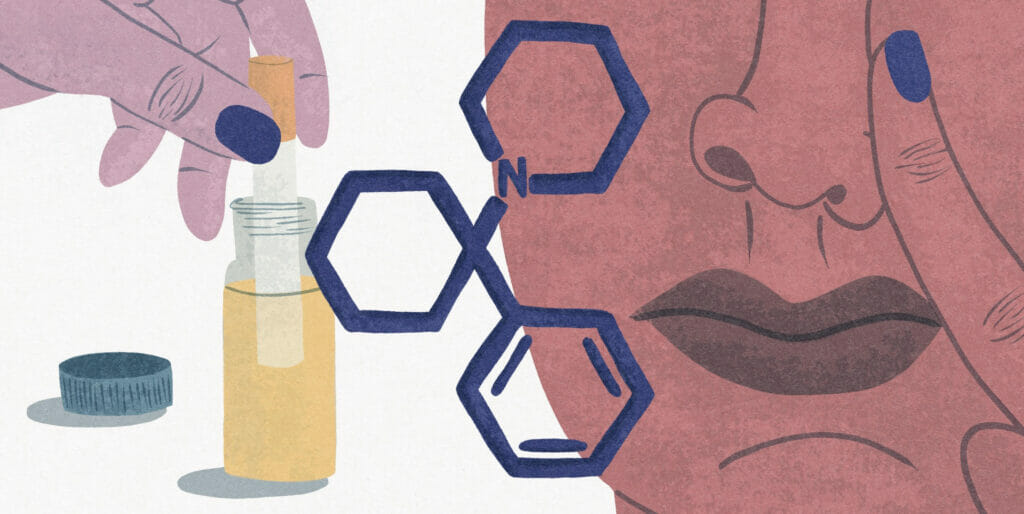By Troy Farah
Original Illustration by Riayn Grey
Phencyclidine or “angel dust” is a misrepresented psychedelic intertwined with a history of racism and police brutality. But efforts to rehabilitate this drug are met with scorn.
This is the second part of a two-part series on why the psychedelic scene ignores PCP. Check out Part 1 here.
PCP, a drug that also goes by the names “angel dust” and “dipper” among others, remains one of the most stigmatized and misunderstood psychedelics around. However, there is little scientific evidence to suggest that PCP is any more dangerous than any other drug. Alcohol, ketamine, LSD and acetaminophen (Tylenol) can all be just as hazardous if used recklessly.
Much of what people think they know about PCP is shaped by outdated media scare stories and urban legends, not actual evidence. (For more on the science, history, discovery and true dangers of PCP, read Part 1 of this series.) Yet the psychedelic community largely ignores PCP while pushing for the legalization of drugs like MDMA and psilocybin.
One aspect of PCP that cannot be ignored is how this mythology directly plays into the militarization of law enforcement and the proliferation of police brutality. The specific demonization of PCP is not only unwarranted, the stigma can be more deadly than the drug.
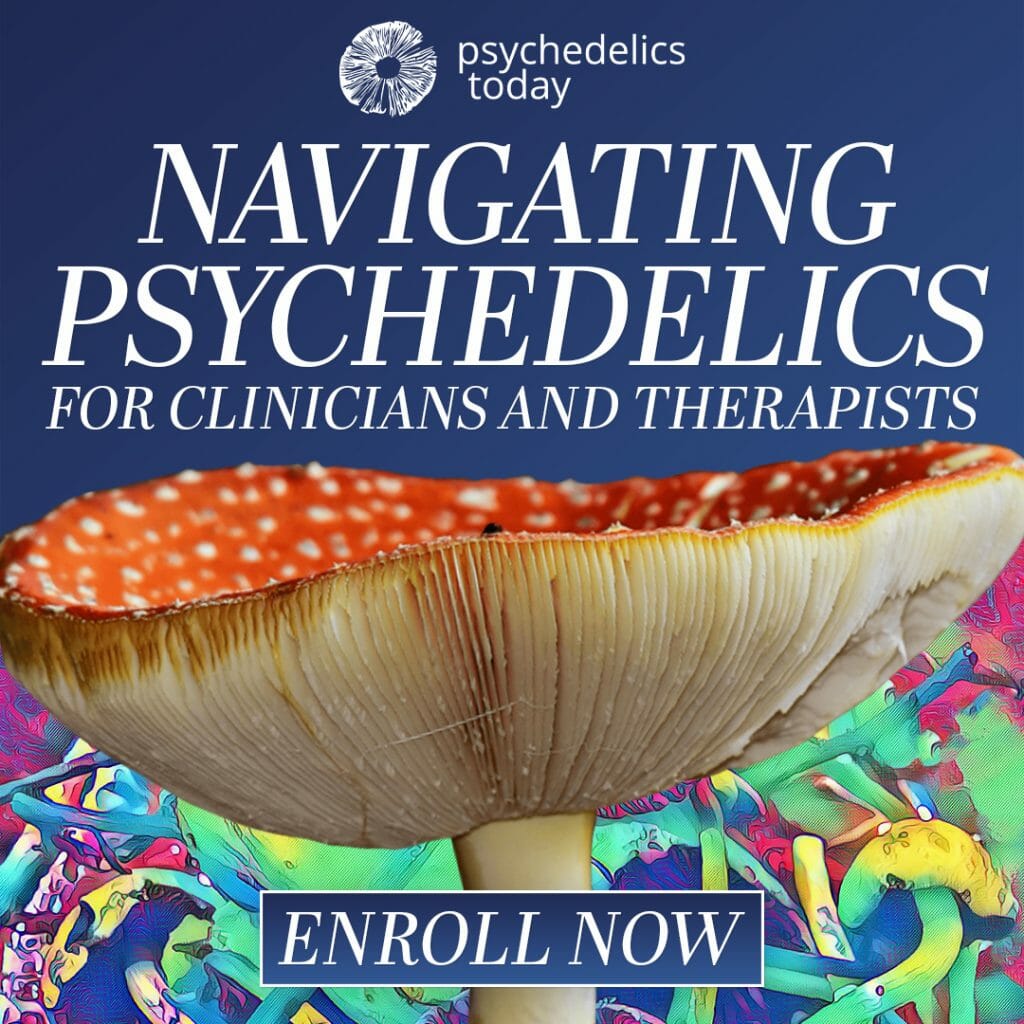
PCP Panic in the Media
PCP was discovered in the 1950’s and was used clinically as an anesthetic for about a decade before being replaced by ketamine—a closely-related drug that offers the same pain-killing benefits with less hallucinations. Sometime in the ‘60s, PCP made its way onto the streets of San Francisco’s Haight-Ashbury district, then spread across the nation. In its wake, horrific stories of users gouging out their eyes or withstanding storms of bullets followed.
Strangely, illicit PCP use has largely been restricted to the U.S. “It has failed to gain traction anywhere else on the planet,” according to an analysis by VICE. Its popularity has waned since the ‘80s, and PCP use remains largely constrained to cities like Philadelphia, Los Angeles and Washington, D.C. But for much of the ‘70s and into the ‘90s, PCP was the panic drug du jour.
In 1977, Time Magazine described it as “A Terror of A Drug” while in 1980 the Chicago Tribune warned its allure was the “Sniff of Madness.” In 1982 the Los Angeles Times pegged it as a “Modern-Day Plague,” according to historian Jacob Taylor’s thesis, PCP in the American Media.
“It’s kind of like a part of police lore, this substance that people take that makes them immune to pain and unreasonable and gives them superhuman strength,” Hamilton Morris, a chemist and documentary filmmaker who has done films about both the positive and negative aspects of PCP, tells Psychedelics Today. “It’s almost designed to terrify law enforcement.”
The stark reputation of PCP soon became a justification for police violence, as the idea spread “that users of the drug, once on a violent rampage, were almost impossible to stop,” Taylor reports. “Police spoke of being thrown around ‘like ragdolls,’ and of needing six or more officers to physically restrain one intoxicated individual. Most notoriously, several incidents were documented in which arrestees high on PCP broke free of handcuffs by simply tearing apart the steel-link chains.”
There’s really little actual evidence to back up these claims. A 1988 analysis in the Journal of Clinical Psychopharmacology looked at 350 studies of PCP and only found three instances of violence, leading the authors to conclude, “PCP does not live up to its reputation as a violence-inducing drug.”
Furthermore, these tales of super human strength may sound familiar: The “negro cocaine fiends” of the early 20th century were an invented media legend used as an extension of the Jim Crow South to demonize Black people. Similar stories of bloodthirsty cocaine users with hyper-strength impervious to bullets were instrumental in banning cocaine and heroin under the Harrison Tax Act.
The specific demonization of PCP is not only unwarranted, the stigma can be more deadly than the drug.
Phencyclidine and Police Brutality
There are echoes of that history in how PCP is perceived by law enforcement today. And the reputation of this drug making users into frenzied killers has real world consequences, especially given that PCP is a cheap drug “linked to urban zones of poverty, unemployment and high crime,” as VICE reports. “In other words it’s a drug linked to inequality, and groups of people who are more likely to be excluded from the mainstream economy, with housing and employment problems, such as the Black community.”
Police officers commonly use fear as an excuse for lethal force—and this defense often works. In the shooting of Philando Castile, officer Jeronimo Yanez of the St. Anthony, Minnesota Police Department, told jurors “I was scared to death. I thought I was going to die,” according to the Pioneer Press. Yanez was not convicted. And the “I-feared-for-my-life narrative” is only multiplied when a strange, infamous drug is introduced.
“When you really think about what that does to the psychology of law enforcement, it’s a terrifying idea,” Morris says. “If they genuinely believe that someone has superhuman strength, that means they can kill you easily. If you believe that the people who use this substance have superhuman strength, that’s a justification for excessive lethal force.”
This is exactly what has happened on numerous occasions, even in recent history. On March 23, 2020, Rochester police approached Daniel Prude, who was naked and having a mental health episode. Officers placed a ‘spit hood’ over Prude’s head, a mesh bag designed to prevent spitting and biting. They then pressed his face into the ground for two minutes, suffocating the 41-year-old man.
A year later, the New York State Attorney General announced the seven officers involved in the case would not face any criminal charges—their lawyers argued that PCP had killed the man, not their actions. A medical examiner’s report listed the death as a homicide, but noted that PCP in Prude’s system contributed to his death.
Of course, just a few weeks after Prude’s death, George Floyd was murdered in Minneapolis by officer Derek Chauvin under similar circumstances: suffocation while being pressed into the ground. In fact, one of the other officers, Thomas Lane, can be heard asking Chauvin if Floyd might be on PCP. Floyd later tested negative for the drug, but methamphetamine and fentanyl were found in his blood. So Chauvin’s defense emphasized that these drugs must have killed Floyd—not the fact that his knee was on Floyd’s neck for 9 and a half minutes. A jury did not agree and convicted Chauvin of two counts of murder and one count of manslaughter.
The case of Laquan McDonald is another rare case in which a police officer was convicted of murder for killing an unarmed civilian. In October 2014, McDonald was walking away from Officer Jason Van Dyke when he was shot 16 times in the back. Van Dyke wasn’t charged until over a year later when dashcam footage was released via a judge’s order.
During the trial, a pharmacologist named James Thomas O’Donnell testified that McDonald was “whacked on PCP,” which had been found during an autopsy. But jurors weren’t convinced and found Van Dyke guilty of 16 counts of aggravated battery with a firearm and second-degree murder.
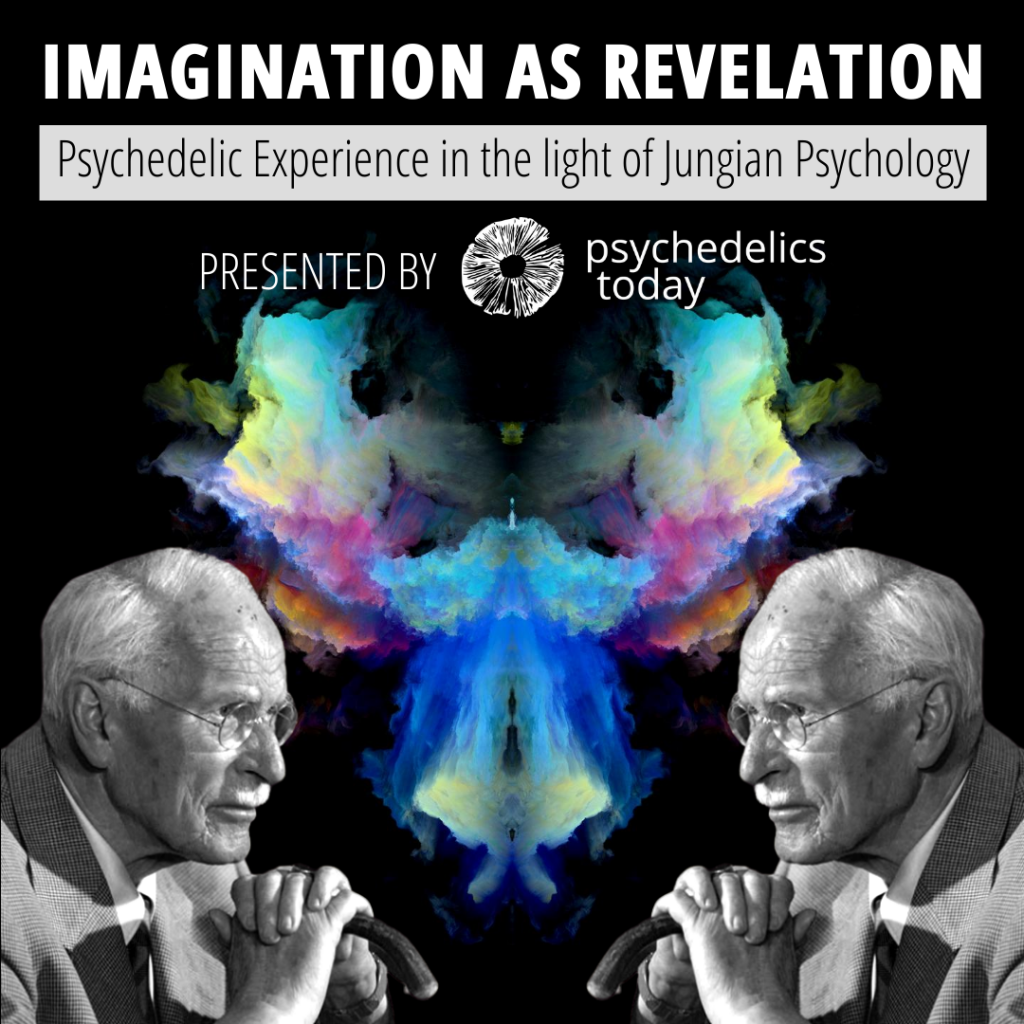
Typically, however, when PCP is involved, that isn’t the case. In 2016 Terence Crutcher was shot dead by officer Betty Jo Shelby in Tulsa, Oklahoma. An autopsy showed “acute phencyclidine intoxication” and also the presence of TCP, a similar drug to PCP. A jury found her not guilty.
“Psychedelic enthusiasts were conspicuously silent when Van Dyke used PCP as justification for his savagery,” Dr. Carl Hart, a neuroscientist and professor of psychology at Columbia University wrote in his most recent book, Drug Use For Grownups. “We also didn’t hear a peep from them when Betty Jo Shelby, a white Oklahoman police officer, evoked the ‘crazy nigger on PCP’ defense to justify her killing of unarmed black Terence Crutcher.”
But PCP doesn’t actually have to be involved, either. The most famous example is likely from March 1991, when Rodney King was yanked from his vehicle and savagely beaten by four Los Angeles police officers. One of them yelled, “He’s dusted!” but King later tested negative for PCP—only alcohol was in his system.
However, during the trial, a “drug expert” declared the officers were “justified” in their belief that King was under the influence of PCP, according to the Chicago Tribune. The officers were acquitted, although two were later sentenced to 30 months in prison by a federal court.
‘Non-Lethal’ Weapons And PCP
One particular PCP-related incident fundamentally changed policing in America. In 1977, 35-year-old biochemist Ronald Burkholder was naked in the streets of Los Angeles, high on PCPy (also called rolicyclidine), a PCP analogue in the class of arylcyclohexylamines. Burkholder was allegedly climbing a sign pole, came down and tried to grab LAPD sergeant Kurt G. Barz’s nightstick. After a struggle, Barz shot Burkholder six times. Because he was naked and unarmed, the case drew considerable controversy, including from the ACLU.
According to Morris, this case and other police murder incidents “produced enough social pressure on law enforcement that they started to carry tasers and pepper spray,” Morris says, adding, “You can actually trace the history of non-lethal incapacitating agents being used by law enforcement to PCP.”
“Cops wanted some kind of tool that would allow them to subdue folks high on PCP without having to lay hands on them. The Taser did the trick,” journalist Matt Stroud reported for OneZero. According to Taylor, some police departments “experimented with ‘grabbing-sticks,’ nets, water-cannons, sound-wave guns, bean-bag guns, and, in a surreal example from New York City, mace-spraying robots … It created a culture of fear among police which must have had a lasting, negative impact on their work.”
“As Americans, when we participate in racism, I think we use at our disposal whatever tools are available. And sometimes PCP can be used as one of those tools.”
—Dr. Carl Hart, author of Drug Use for Grown Ups
With a new market, many companies soon filled the gap, often openly advertising so-called “less-than-lethal” weaponry using PCP as a selling point. “A lot of companies would market to law enforcement non-lethal equipment, like tasers, stun guns, there were nets, and they would really play up the fact that these are for people that are intoxicated on PCP specifically,” Dr. Jason Wallach, a neuropsychopharmacologist who has studied PCP and related chemicals, tells Psychedelics Today. “Anytime they can sell using fear, companies will.”
Encouragement came from the federal government as well. For example, a 1994 bulletin from the National Institute of Justice advertised oleoresin capsicum—that is, pepper spray—and flat out quotes a police sergeant saying, “When confronting subjects under the influence of PCP … ‘OC is the best option short of a lethal weapon. If we did not have pepper spray, we would have to use lethal force. Having OC is another tool to use at the lowest possible level versus impact weapons, which won’t work anyway on subjects under the influence of PCP,” implying that people on PCP are impervious to bullets.
Even today companies market misinformation about PCP to sell something. Lexipol, a Texas consulting company that provides training to police departments, has a blog post on its website from 2016 titled, “5 safety tips for cops when dealing with a subject high on PCP.” It contains multiple urban legends, such as suspects breaking free of handcuffs or that PCP can be absorbed through the skin, an echo of the fentanyl touch myth that persists in the media today. It even suggests drugging people: “allow medical providers, if available and authorized, to use sedative medications to chemically restrain the patient.”
But describing these tools as “less-than-lethal” is just a euphemism—they can and do kill. A 2017 Reuters investigation documented 1,005 deaths from tasers, in which 9 out of 10 involved unarmed people. The news organization was able to obtain 712 autopsies, reporting: “In 153 of those cases, or more than a fifth, the Taser was cited as a cause or contributing factor in the death.”
Tasers also don’t reduce police shootings. An eight-year study of the Chicago Police Department by the National Bureau of Economic Research, for example, noted that, “Police injuries fell, but neither injury rates nor the number of injuries to civilians were affected. There is no evidence that Tasers led to a reduction in police use of firearms.”
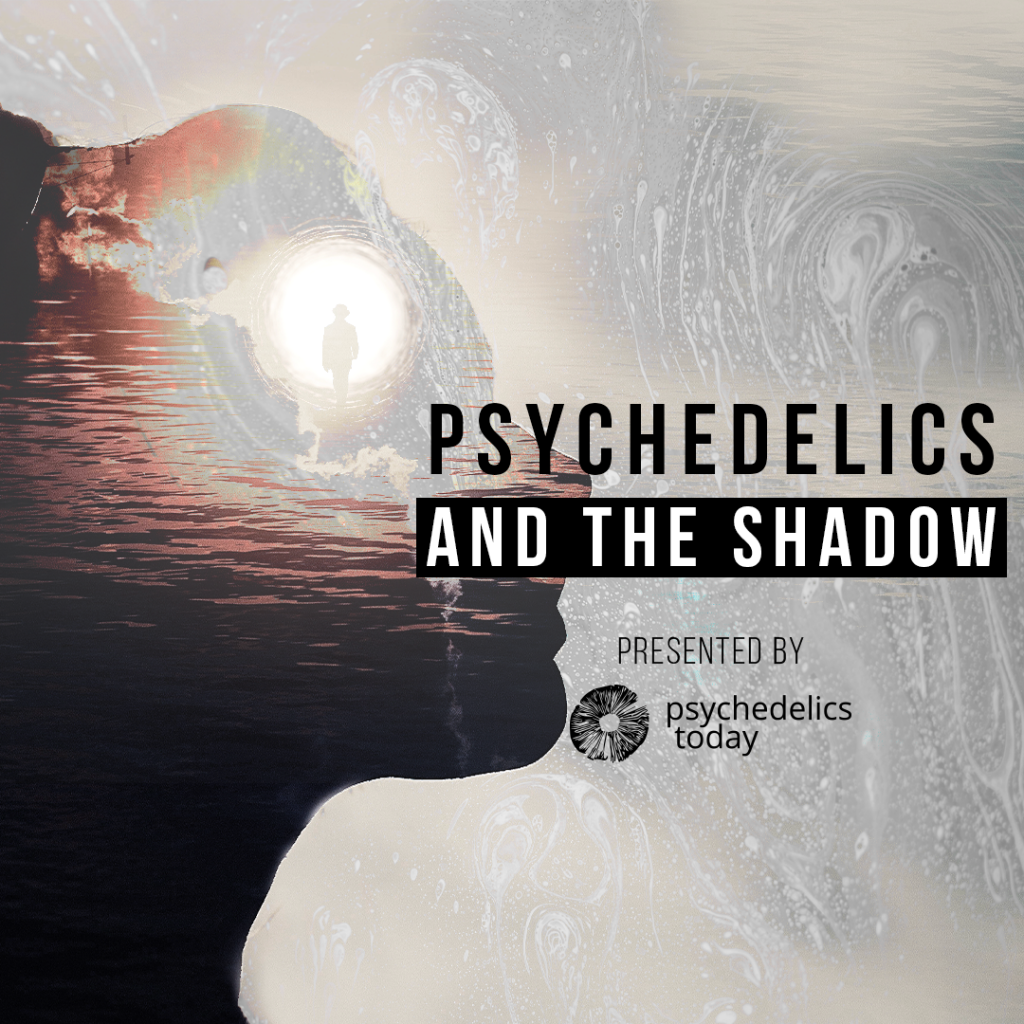
PCP Isn’t The Point
PCP is uniquely treated among drug users and law enforcement. Even drugs that are somewhat similar to PCP are not given the same level of stigma. But in the end, drugs are often just used as an excuse for racism and over-policing in America—the chemical itself is irrelevant.
“As Americans, when we participate in racism, I think we use at our disposal whatever tools are available. And sometimes PCP can be used as one of those tools,” Hart tells Psychedelics Today. “I don’t think that PCP is special in that way or anything like that.”
People who care about ending the drug war or generally reforming drug policy should be aware of the history of racism and police brutality that has played into PCP’s reputation as a dangerous drug. Like any drug, PCP can be abused. But what actually makes drug use dangerous often has more to do with prohibition than any intrinsic nature of a chemical. And police overwhelmingly benefit from the power dynamics of prohibition, meaning they have a deep investment in this mythology.
“It’s not really about PCP, of course,” Morris says. “The bigger issue is the way that we assign certain values to drugs as pharmacological determinism, and what the medical and political outcomes of that can be in terms of prison sentences, in terms of law enforcement’s behavior.”
This is why PCP should probably be more centered in the conversation about psychedelic drug reform. The efforts to decriminalize drugs shouldn’t just focus on the substances people think are safe or socially acceptable, but focus on ending the systems that inflict suffering on minorities and low-income communities.
“The main most important thing is for people to know that pharmacologically, [PCP] is not that dissimilar from ketamine,” Hart says. “And the sort of narratives that we tell ourselves about it has less to do with pharmacology, and more to do with these social sort of issues. I just hope that they’re not fooled by those cop stories any longer.”
About the Author
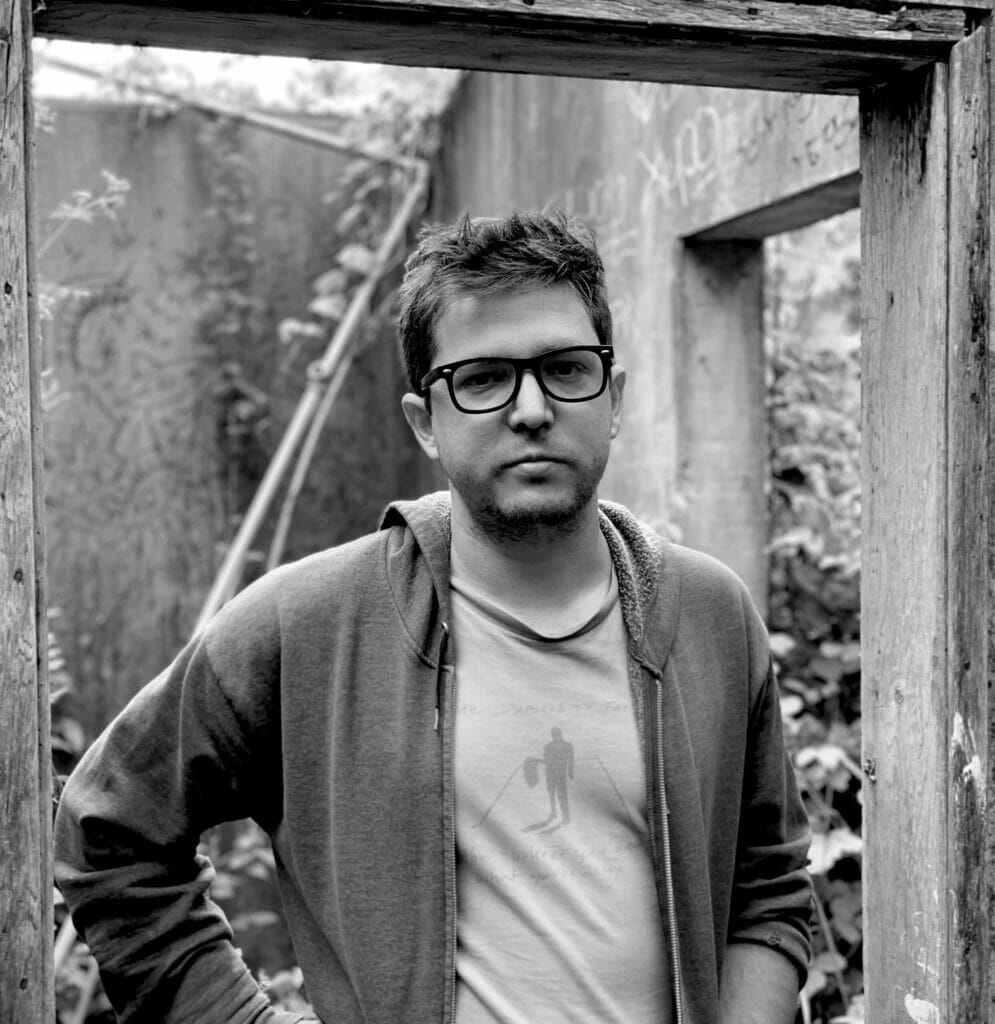
Troy Farah is an independent science and drug policy reporter that lives in Southern California with his wife and two dogs. His work has appeared in National Geographic, The Guardian, VICE, WIRED and others. He co-hosts the podcast Narcotica and can be found on Twitter @filth_filler or on his website troyfarah.com .
